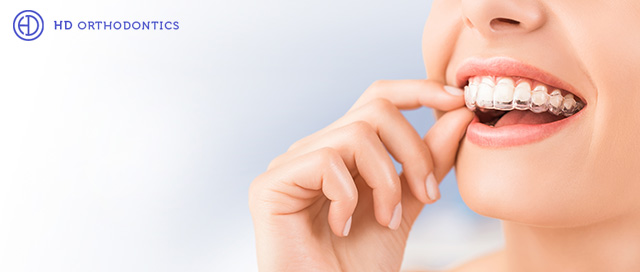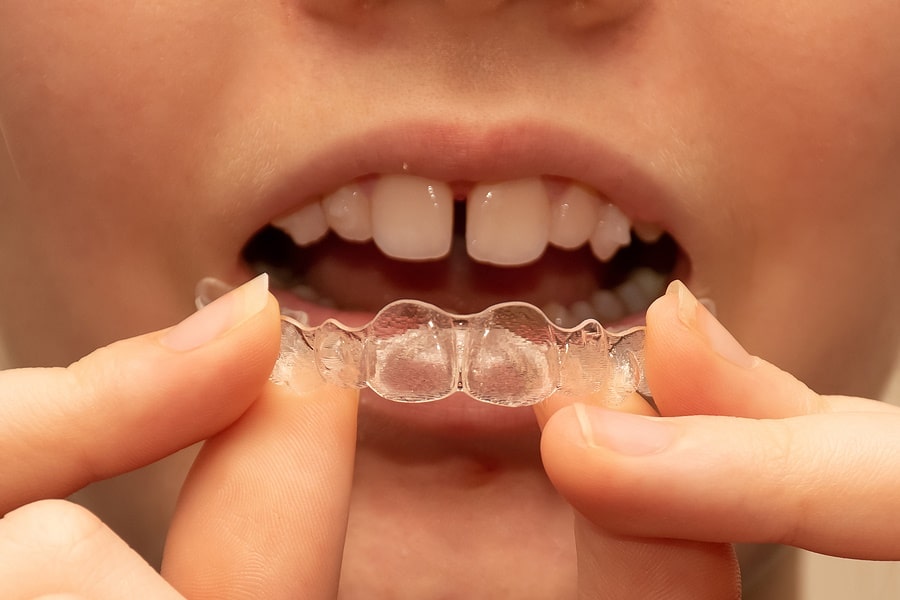Leading Reasons to Choose Invisalign Over Other Orthodontic Treatments
Leading Reasons to Choose Invisalign Over Other Orthodontic Treatments
Blog Article
Invisalign vs. Typical Braces: Which Choice Is Right for You?
When thinking about orthodontic treatment, the choice between Invisalign and traditional dental braces offers a number of essential elements that merit mindful analysis. Invisalign uses a discreet alternative with detachable aligners, while typical braces offer a more noticeable yet reliable remedy for serious misalignment.
Review of Therapy Choices

In contrast, typical braces include steel brackets and cables that are adhered to the teeth. This method uses continual pressure gradually to achieve positioning. While reliable for complicated orthodontic issues, standard dental braces require routine visits for modifications and can posture challenges in maintaining oral health as a result of the difficulty of cleaning around braces and cables.
Both options have their advantages, and the option usually rests on specific dental conditions, way of life choices, and individual conformity. Inevitably, consulting an orthodontic professional is important for establishing one of the most ideal therapy strategy customized to specific demands. Recognizing the subtleties of each alternative can significantly affect the total success of orthodontic treatment.
Visual Factors To Consider
A substantial variable affecting the selection in between Invisalign and standard braces is the visual charm each treatment provides. Invisalign aligners are crafted from clear plastic, making them essentially undetectable when used. This discreet appearance is particularly appealing to teens and adults who may feel uneasy regarding their orthodontic therapy. The capacity to maintain a natural smile throughout the alignment procedure can significantly improve the client's confidence in professional and social setups.
On the other hand, conventional dental braces consist of metal braces and cords, which can be a lot more noticeable. While innovations in orthodontic innovation have caused the development of smaller sized braces and colored elastics, typical braces still keep a more obvious profile. For some people, the presence of braces might discourage them from looking for necessary treatment.
Inevitably, the option in between Invisalign and traditional braces might depend upon personal choices concerning aesthetic appeals. People who focus on discernment frequently favor Invisalign, while those that are less concerned concerning visibility may choose for typical braces. Comprehending the visual implications of each option is vital for making an informed decision that lines up with one's way of life and choices.
Convenience and Convenience

In terms of benefit, Invisalign aligners are removable, allowing clients to appreciate their favored foods without limitation and maintain optimum dental hygiene. Brushing and flossing are streamlined, as the aligners can be gotten during these regimens, whereas conventional braces call for mindful maneuvering around cords and brackets.
Additionally, Invisalign's dynamic system enables for fewer orthodontic visits. People normally receive numerous sets of aligners at as soon as, which can enhance the treatment procedure and reduce time invested in the orthodontist's chair. In contrast, typical braces demand routine changes, making them less hassle-free for those with hectic timetables. Invisalign. In general, the convenience and benefit of Invisalign make it an enticing option for several individuals looking for orthodontic therapy.
Therapy Period and Effectiveness
While both Invisalign and traditional braces are reliable in correcting dental imbalances, the period of treatment can vary dramatically between both choices. Commonly, Invisalign treatment can take anywhere from 12 to 18 months, depending upon the intricacy of the instance. The clear aligners function by gradually shifting teeth into their preferred placements, and normal follow-ups with an orthodontist help make sure development stays on track.
In contrast, traditional braces typically require a longer commitment, typically ranging from 18 months to three years. This is because of their set nature and using braces and cords, which can be extra reliable for complex cases and extreme imbalances (Invisalign). The treatment efficiency of typical braces is well-documented, as they permit exact changes and greater control over tooth activity
Ultimately, the selection in between Invisalign and traditional dental braces might rest on both the expected treatment period and the specific dental problems available. Consulting with an orthodontist is essential, as they can supply customized suggestions based on specific requirements, guaranteeing the picked approach straightens with wanted results and durations.
Expense Comparison and Insurance Alternatives
Price plays a considerable role in the decision-making procedure for individuals taking into consideration orthodontic therapy, whether going with Invisalign or traditional dental braces. Typically, the cost of Invisalign arrays from $3,000 to $8,000, while typical braces usually set you back in between $2,000 and $6,000. Elements influencing these expenses include the intricacy of the situation, his explanation the duration of therapy, and geographical place.
Many oral insurance policy strategies supply partial insurance coverage for orthodontic therapies, however the specifics can differ extensively. Typically, typical go to website dental braces might be more often covered by insurance coverage strategies compared to Invisalign, which some insurance providers classify as a cosmetic procedure.
Additionally, numerous orthodontic techniques provide versatile layaway plan, making both therapy alternatives much more available. Patients must inquire concerning possible financing choices and discounts for upfront repayments. Evaluating the complete expense, consisting of insurance policy benefits and layaway plan, is important for making an educated decision that straightens with both visual preferences and spending plan considerations.

Final Thought
In recap, the choice between Invisalign and traditional dental braces rests on multiple elements, including visual preferences, convenience, treatment period, and price. Invisalign provides a discreet, detachable choice that facilitates dental hygiene and dietary adaptability, while traditional braces might be a lot more suitable for complicated oral problems and often come at a reduced price point. Ultimately, consultation with an orthodontist is crucial to assess individual scenarios and figure out the most appropriate therapy option for attaining optimal oral placement.
When considering orthodontic treatment, the selection between Invisalign and conventional braces presents numerous crucial variables that warrant cautious evaluation.Contrasting Invisalign and standard dental braces reveals unique therapy options for orthodontic correction.While both Invisalign and typical braces are efficient in remedying dental imbalances, the period of treatment can vary dramatically between the two choices.Price plays a significant duty in the decision-making procedure for individuals taking into consideration orthodontic therapy, whether deciding for Invisalign or conventional dental braces.In summary, the choice in pop over here between Invisalign and standard braces hinges on several factors, including aesthetic preferences, convenience, treatment duration, and cost.
Report this page